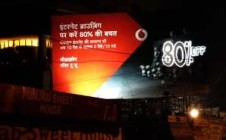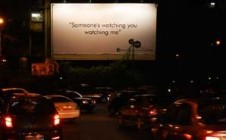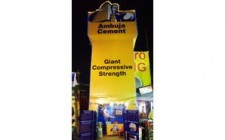Activation versus traditional OOH
By Bhawana Anand & Munmun Saha - December 12, 2013
Most brands worth their products today list engaging activation somewhere on top of their must-do marketing initiatives. So what has been their experience? And will activation replace traditional OOH? A few brands answer these questions as they share their take and experience in the area of activation.
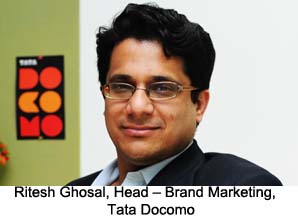 'It's more about'and' rather than'versus'
'It's more about'and' rather than'versus' Ritesh Ghosal, Head - Brand Marketing, Tata Docomo
It is not a question of one at the cost of other. Rather, we evaluate the "OOH vs activation†question as "OOH AND activationâ€. And, more importantly, WHEN do we flip the switch on for OOH AND activation? OOH is a reminder medium mostly, while activation makes the brand exposure opportunity much more experiential. So yes, we do spend on activation and increasingly so, but not necessarily "shift†from OOH budget. Activation enjoys a more direct connect with the customers as compared to OOH. If the objectives for activation module are sharp and well defined, the results are certainly measurable. It is difficult to overlook brand activation now and therefore the need for it to be a part of any IMC plan. Equally so, a well thought out OOH campaign built using the right planning metrics can be measurable and therefore effective (or ineffective) . A key challenge in activation is scalability. How do you create a standardized activation experience across multiple cities, while keeping an eye on making your spends effective? One way to do so is to create virality around the brand activation experience by taking the physical (mall, retail) to the digital (website, youtube). With our Open UP campaign, we created multiple experience points for our TG in the physical world, where we asked them to "Open Upâ€. We took the same activation to digital via an interesting Facebook app, where we curated relevant datapoints of our fans who engage with the app and enabled them to "open up†to their friends.
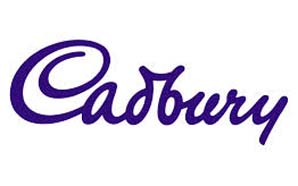 'Activation complements traditional OOH'
'Activation complements traditional OOH' Cadbury Spokesperson:
Activations have definite advantages over traditional OOH, in the kind of engagement opportunities that they provide. They allow brands to interact with the consumer at various touch points and at a level which traditional OOH would not normally allow. While the objectives of both activations and traditional OOH may vary, they form a part of a holistic campaign, and can be equally effective if executed well. We relaunched CDM Silk in Feb '13 in its softer, smoother and silkier format and as part of the re-launch campaign we conceptualized the "Bid for Silk†- a digital and on-ground activity, with an objective to drive engagement with CDM Silk lovers. We received an overwhelming response from the consumers, with close to 2.5 million interactions online for CDM Silk. Another activation campaign was "Say it with Silk†aimed at tapping CDM Silk lovers (Silkaholics). The challenge faced with activations is that of the scale created as compared to traditional OOH, given the cost efficiencies it provides. But activations and traditional OOH both play a different role in the marketing mix, depending on what the brand aims to communicate or do. While there is a rise in the scale of activations, we see it more as complimenting traditional OOH rather than replacing it.
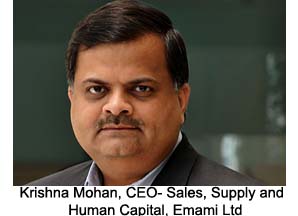 'Activation has better impact in terms of brand experience'
'Activation has better impact in terms of brand experience' Krishna Mohan, CEO- Sales, Supply and Human Capital, Emami Ltd
As a company, considering the categories in which we exist, OOH and activations budgets have largely remain unchanged. In certain categories our activation budgets are higher and in certain others, the OOH spends are higher. The mix largely has not remained unchanged. In categories wherein consumer experience\engagement with the product is essential, activations become very effective. For one of our power brands, Navratna Oil which is essentially an experiential product, we did salon activation in the markets of Karimnagar and Warangal (in Andhra Pradesh) in the recent past. This activation not only involved the end users, but also created a sense of excellence and recognition among the salon owners thus generating more trials for the brand. After this two-month campaign, it was found that there has been almost a 20% growth among consumers taking Navratna Oil massage in these markets. With regular initiatives like these, today about 60% of salons in Andhra Pradesh use Navratna Oil for giving head massage to their customers. Scale of operations\scaling up is the challenge with activations. They are best used to focus specially with some objective. But availability of agencies across the country who deliver quality execution of the activations is also a challenge, while the cost per consumer contact is also higher for activations. However, they have better impact in terms of ensuring brand experience. I think going forward both will co-exist, as the objectives that they serve are slightly different.
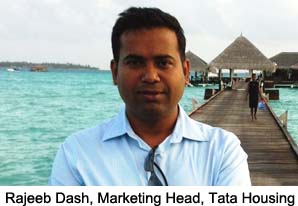 'Activation essential for top of mind recall'
'Activation essential for top of mind recall'Rajeeb Dash, Marketing Head, Tata Housing
Yes, there has been a shift in the budget towards activation, but not to a significant extent. Activation always compliments the ATL communications, so it has to be seen as an integral part of our marketing campaign and not a stand-alone activity. It not only helps the consumer to connect and engage with the product but also, the whole experience helps in creating a long lasting memory in consumers mind. Activation works on all five senses (at times), thereby making the experience extremely memorable and creating a strong top-of-the-mind recall. These personal experiences not just help consumers make intelligent and informed purchasing decisions, but also turn them into brand evangelists. Activation, if applied creatively can be an engaging tool, yielding positive results for the brand. The main challenge in activation is in terms of maximizing the reach. To maximise reach it is essential to have a 360 degree approach to activate the idea itself. Today consumers have become extremely skilled at sifting through the clutter of advertising and marketing campaigns In order to break through the clutter and increase top of the mind recall, it is essential to engage the consumers and here, activation plays a very essential role.
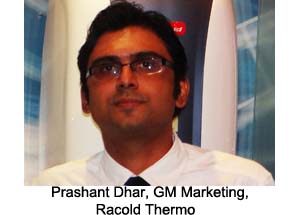 'Both will co-exist'
'Both will co-exist' Prashant Dhar, GM Marketing, Racold Thermo
Yes, there is a shift happening in the outdoor budget towards activations. Next year we do have plans of truncating it by 30-40%. Primarily, the reason is that when you are having limited budget, then you need to align in the main mediums that deliver highest reach. Outdoor has got localized reach and you have to invest in multiple sites to garner adequate visibility, so the cost per reach is generally higher. Typically activations have a dual role to play, one is of generating visibility and the other, which is most important, is to drive engagement with the brand .This engagement helps to build a lasting impact with the consumers. In case of plain outdoors, you can only generate awareness, which might just have a fleeting impact on the consumer.
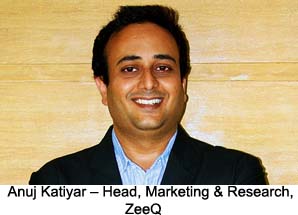 'Interaction & engagement is the way forward'
'Interaction & engagement is the way forward' Anuj Katiyar - Head, Marketing & Research, ZeeQ
We can't say that activations are a threat to OOH medium. They both cater to different objectives because OOH medium is meant to create awareness with hoardings and digital sites and also develop the one way communication. But the activations create engagement and interactivity with the end consumer. It gives the touch-and-feel experience and develops two way communications. Zee Q channel has different products and content, therefore considering the nature of channel which is much more engaging, we have utilised the activation medium in a much broader way. But we definitely didn't dissolve our OOH budgets. We do OOH advertising on bus panels and etc. Recently, ZeeQ launched an innovative campaign with an aim to educate and entertain the child. As a part of the campaign, people dressed up as Astronauts, Scientists and various other interesting characters were present to surprise the children by giving away prizes on answering simple questions at the ZeeQ kiosk in Terminal 1C of the domestic airport. OOH has definitely better reach than activation, but the interaction and two way communication build between the brand and customer is far more fruitful in activation. Yes, going forward, we do see activations replacing traditional OOH because interaction and engagement is the way forward.
 'Technologies help activations evolve'
'Technologies help activations evolve' Shalini Gupta, Head- Brand & Corporate Communication, Loop Mobile (India) Ltd
Activations are very need based initiatives. OOH budget is always on the higher side -- upto 40% of the campaign spends, whereas activation may be just 5-8%. In cases where a customer engagement is required or there is need for a hands-on experience for a product or offer, then activation helps to address the required target audience and creates buzz. We have done activations like In My Zone, wherein we identified specific pockets of Mumbai that were high on both voice and data i.e. maximum incoming and outgoing calls, exchange of text messages and usage of data services. The idea was to engage consumers in these areas through interactive sessions, fun games, etc and create buzz around our innovative and affordable products and services. Today activations have evolved to a high level of engagement through better technology and concepts. But going forward I would say both traditional OOH and activation have their own reach and acceptance, based on the focus of the campaign.
Summing up
At the moment, it appears that activation and traditional OOH, both have their own roles to play with the former playing a more supplementary role. But the point is that with experience becoming the key to differentiate a brand presence amidst the clutter, activation might up the charts leaving traditional OOH behind. The need is for the medium to evolve with newer innovations to offer an engaging experience through its own platform so that, it does not lose out on the race towards higher spends.

Stay on top of OOH media trends
Advertisement

_140_270.png)
-2_140_270.png)
_140_270.png)
